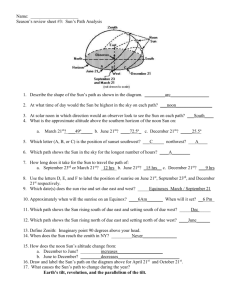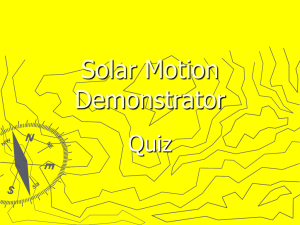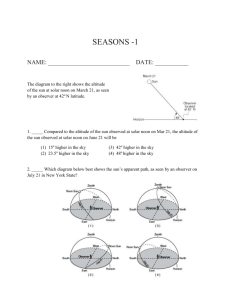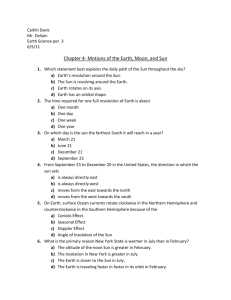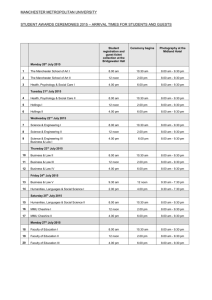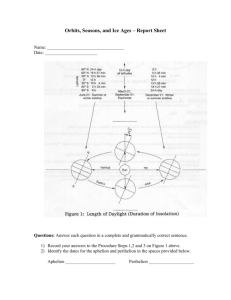Unit 1 & 2 Review Notes
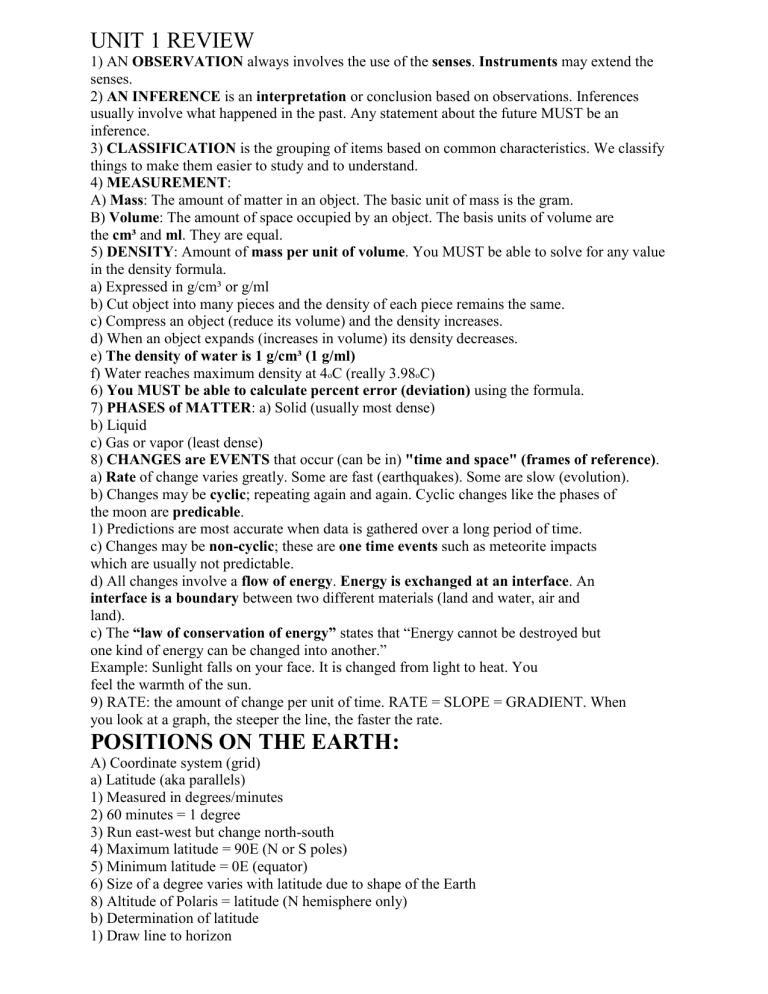
UNIT 1 REVIEW
1) AN OBSERVATION always involves the use of the senses . Instruments may extend the senses.
2) AN INFERENCE is an interpretation or conclusion based on observations. Inferences usually involve what happened in the past. Any statement about the future MUST be an inference.
3) CLASSIFICATION is the grouping of items based on common characteristics. We classify things to make them easier to study and to understand.
4) MEASUREMENT :
A) Mass : The amount of matter in an object. The basic unit of mass is the gram.
B) Volume : The amount of space occupied by an object. The basis units of volume are the cm³ and ml . They are equal.
5) DENSITY : Amount of mass per unit of volume . You MUST be able to solve for any value in the density formula. a) Expressed in g/cm³ or g/ml b) Cut object into many pieces and the density of each piece remains the same. c) Compress an object (reduce its volume) and the density increases. d) When an object expands (increases in volume) its density decreases. e) The density of water is 1 g/cm³ (1 g/ml) f) Water reaches maximum density at 4 o
C (really 3.98
o
C)
6) You MUST be able to calculate percent error (deviation) using the formula.
7) PHASES of MATTER : a) Solid (usually most dense) b) Liquid c) Gas or vapor (least dense)
8) CHANGES are EVENTS that occur (can be in) "time and space" (frames of reference) . a) Rate of change varies greatly. Some are fast (earthquakes). Some are slow (evolution). b) Changes may be cyclic ; repeating again and again. Cyclic changes like the phases of the moon are predicable .
1) Predictions are most accurate when data is gathered over a long period of time. c) Changes may be non-cyclic ; these are one time events such as meteorite impacts which are usually not predictable. d) All changes involve a flow of energy . Energy is exchanged at an interface . An interface is a boundary between two different materials (land and water, air and land). c) The “law of conservation of energy” states that “Energy cannot be destroyed but one kind of energy can be changed into another.”
Example: Sunlight falls on your face. It is changed from light to heat. You feel the warmth of the sun.
9) RATE: the amount of change per unit of time. RATE = SLOPE = GRADIENT. When you look at a graph, the steeper the line, the faster the rate.
POSITIONS ON THE EARTH:
A) Coordinate system (grid) a) Latitude (aka parallels)
1) Measured in degrees/minutes
2) 60 minutes = 1 degree
3) Run east-west but change north-south
4) Maximum latitude = 90E (N or S poles)
5) Minimum latitude = 0E (equator)
6) Size of a degree varies with latitude due to shape of the Earth
8) Altitude of Polaris = latitude (N hemisphere only) b) Determination of latitude
1) Draw line to horizon
2) Draw line to Polaris
3) Angle formed by these lines is the latitude
4) Applies to Northern hemisphere only c) Longitude (aka meridians)
1) Measured in degrees/minutes
2) Run North-south connecting poles but change east-west
3) Prime meridian (0E) through Greenwich England
4) Time changes 1 hour per 15E long. change (West = earlier / East = a) Region of space w/measureable values
1) Examples: elevation/temperature/pressure b) Scalar fields
1) Values have magnitude only
2) Examples: elevation/temperature/pressure c) Vector fields
1) Values have magnitude and direction
2) Examples: Wind/magnetic fields/gravitational fields
C) Gradient (aka slope, rate of change) change in field value between 2 points gradient = -------------------------------------- change in distance between 2 points a) Lines on a map connecting points of equal value b) Special isolines:
1) Isotherms - equal temperature
2) Isobars - equal atmospheric pressure
3) Contour lines - equal elevation c) Interval - value difference between adjacent lines d) Index isoline - marked with its value e) Isolines interval small (close) = steep gradient
Isoline interval large (far apart) = gentle slope f) Contour lines seem to point in opposite direction of stream flowing across them
(point uphill) g) Sea level = 0 elevation h) Contour lines w/hatch marks = slope downward i) Max elevation is a value higher than the highest contour line but less than the next WOULD be.
E) Map legend a) Gives distance scale (km and/or miles) b) Key to symbols of man-made and natural features c) Indicates direction
> This celestial sphere diagram shows the path of the sun as it moves through the sky on 4 different days of the year at a location in New York State.
> You, the observer, are standing in the gray, shaded area at the intersection of the 2 dotted lines.
> The top of the sphere (where the protractor is located) represents the highest, solar noon, altitude of the sun for that day.
> To see the sun at noon on any day of the year, the observer must look to the south.
1) Path D-
D’: It is the longest path. It will take the sun the longest time to travel this path. Therefore this is the path the sun takes on the day with the greatest duration of insolation (most hours of daylight), June
21st, the first day of summer in the northern hemisphere.
> The sun rises north of east and sets north of west.
> The noon altitude of the sun is about 71.5E, the highest noon altitude for any day of the year.
> Since the sun is high in the sky at noon, it’s insolation is most direct (strongest).
> A stick placed in the center of the field (where the observer is located) will cast the shortest noontime shadow for any day of the year. At noon, that shadow will always point north.
2) Path BB’: Notice that the sun rises due east and sets due west. It’s path divides the field into two equal halves. This is the path of the sun on the vernal (March 21st) and autumnal (Sept. 23rd) equinoxes.
> The path of the sun is shorter than it was on June 21st, so the duration of insolation is less. On either equinox there are 12 hours of day and 12 hours of night for every location on Earth.
> The noon altitude of the sun is about 48E. The insolation is less direct than it was in June.
3) Path A-
A’: It is the shortest path. The sun will be in the sky the fewest hours on this day (the shortest duration of insolation). It is December 21st, the first day of winter in the northern hemisphere.
> The sun rises south of east and sets south of west.
> The noon altitude of the sun is 24.5E, the lowest noon altitude for any day of the year.
> Since the sun is low in the sky at noon, it’s insolation is least direct (weakest).
> A stick placed in the center of the field will cast the longest noontime shadow for any day of the year.
4) Path CC’: Since this path is between the equinoxes and June
21st, it could be either of two dates. It could
be between June 21st and September 23rd , probably a day in mid August. Or it could be between March
21st and June 21st, probably a day in mid May.
On this diagram the sun is in the southern sky at noon.
This is a sure sign that this sphere is for a location in the northern hemisphere. The longest path, which is probably June 21st, shows the noon sun at an altitude of
90E. Where is the noon sun at 90Eon June 21st? Right, at a latitude of 23.5EN, the Tropic of Cancer.
In this diagram the sun rises due east and sets due west.
That only happens on an equinox. Notice that at noon the sun is directly overhead at an altitude of 90E. Where would you have to be for the sun to be directly overhead on an equinox. Right again! On the equator, 0E latitude.
Notice that the noon sun is in the northern sky. This is a sure sign that this location is in the southern hemisphere
This is a very strange diagram. The sun seems to be on the horizon and it’s path seems to go round and round without rising or setting. What gives away the answer is the position of Polaris. Where would you have to be in order for Polaris to be directly, 90Eoverhead. At the north pole. Notice also that all directions are south. The day must be June 21st when the sun rises or December
21st when the sun sets. On these days it’s path circles just on the horizon.
At first glance this looks like a location in the southern hemisphere. It seems to be the reverse of the diagrams we are used to. But notice that the noon sun is in the southern sky. This diagram is for a mid-latitude location in the northern hemisphere, such as New York. The directions are reversed from way they are usually drawn.
Don’t be fooled.
Question: Which location in the diagram will receive the most hours of daylight on the day of the year this diagram represents?
1) Look at the line of latitude at which a letter is located.
2) Ask yourself “What percent of this line is in the daylight?”
3) That is the percent of the 24 hours in a day that will be daylight at that location.
IMPORTANT: The percent of the line in daylight has nothing to do with the length of the line. For example, about 90% of line A is in daylight and only 50% of line D is in the day. This is true even though line D is much longer than line
A. If you lived on the equator, every day would have 12 hours of day and 12 hours of night. Notice that the north pole receives 24 hours of daylight while the south pole receives none on this day.


